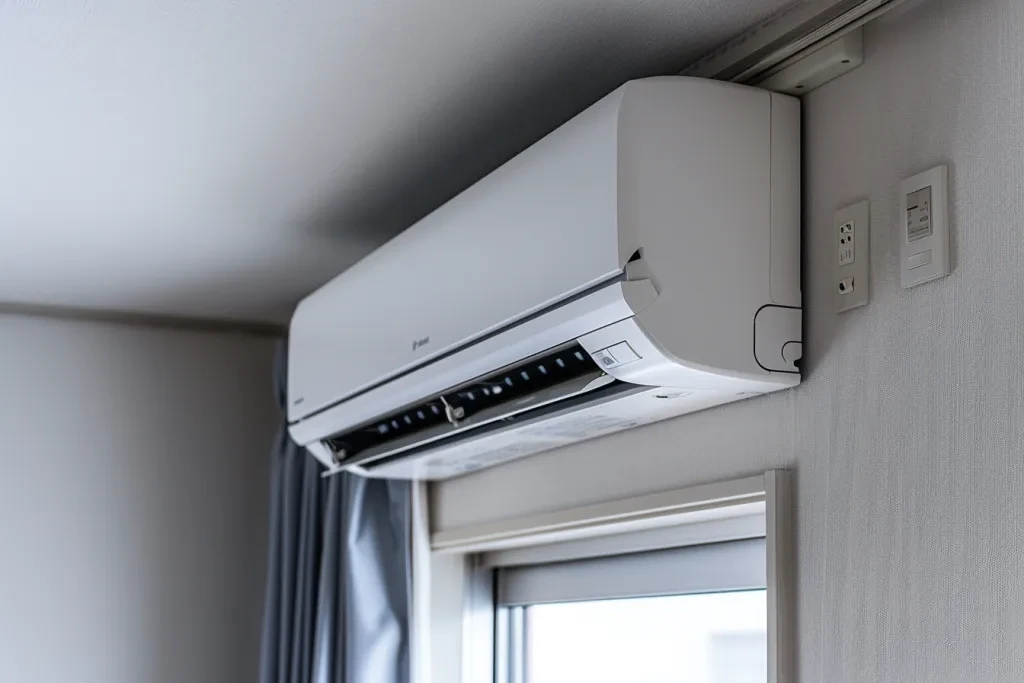As temperatures soar, the quest for efficient, versatile cooling solutions becomes paramount. Enter the mini split air conditioner, a game-changer in climate control technology. This guide explores the ins and outs of mini split systems, from how they operate to selecting the perfect model for your needs.
Table of Contents:
– What is a mini split air conditioner?
– How do mini split air conditioners work?
– How to use a mini split air conditioner
– How much does a mini split air conditioner cost?
– Top mini split air conditioners
What is a mini split air conditioner?

A mini split air conditioner, also known as a ductless split system, is a highly efficient and flexible cooling solution. Unlike traditional central air conditioning systems that require extensive ductwork, mini splits consist of an outdoor compressor/condenser unit and one or more indoor air-handling units, connected by a conduit. This design not only simplifies installation but also allows for individual temperature control in different rooms, making it an ideal choice for residential and commercial spaces alike.
Mini split systems are celebrated for their energy efficiency, quiet operation, and versatility. They can be used for cooling only or as a heat pump for both heating and cooling, providing year-round comfort. With options for wall-mounted, ceiling-recessed, or floor-standing indoor units, mini splits offer a customizable solution to meet the unique needs of any space.
How do mini split air conditioners work?

The magic of mini split air conditioners lies in their split design and the refrigeration cycle. The outdoor unit houses the compressor, which pumps refrigerant through the system. As warm air from the indoor space is drawn into the indoor unit, it passes over coils cooled by the refrigerant. Heat and moisture are extracted from the air, cooling it before it’s circulated back into the room. The heat absorbed by the refrigerant is then expelled to the outdoors by the outdoor unit.
This process is made efficient through the use of inverter technology, which allows the compressor to adjust its speed dynamically to match the cooling demand. This not only reduces energy consumption but also minimizes temperature fluctuations, creating a more comfortable environment. Additionally, many mini split systems are equipped with filters and air purifying functions, improving indoor air quality by removing dust, allergens, and odors.
How to use a mini split air conditioner

Using a mini split air conditioner is straightforward, thanks to user-friendly controls and remote operation. To maximize efficiency and comfort, it’s important to set the temperature to a comfortable level without overcooling. Most systems offer a range of modes, including cooling, heating (for heat pump models), dehumidification, and fan-only, allowing you to customize the operation to suit your needs.
Regular maintenance is key to ensuring your mini split system operates efficiently for years to come. This includes cleaning or replacing the air filters regularly, ensuring the outdoor unit is free from debris, and scheduling professional maintenance checks. With proper care, mini split air conditioners can provide reliable, efficient cooling and heating.
How much does a mini split air conditioner cost?

The cost of a mini split air conditioner can vary widely depending on factors such as the system’s capacity, features, and the number of indoor units required. On average, a single-zone mini split system can cost anywhere from $600 to $3,500, with installation costs adding an additional $300 to $1,500. Multi-zone systems, which include multiple indoor units connected to a single outdoor unit, can cost significantly more.
While the initial investment may be higher than traditional window units or portable air conditioners, the long-term savings in energy costs can make mini split systems a more economical choice. Additionally, many utility companies offer rebates or incentives for installing energy-efficient cooling solutions, further reducing the overall cost.
Top mini split air conditioners

When it comes to selecting a mini split air conditioner, there are several top performers known for their efficiency, reliability, and features. Some of the leading brands include Mitsubishi Electric, Daikin, Fujitsu, LG, and Gree. These manufacturers offer a range of models to suit different needs, from basic single-zone systems to advanced multi-zone configurations with smart home compatibility and energy-saving features.
When choosing a mini split system, consider factors such as the size of the space to be cooled, desired energy efficiency ratings (such as SEER and HSPF), and additional features like Wi-Fi connectivity or air purification. Consulting with a professional can help ensure you select a system that meets your needs and is properly sized for optimal performance.
Conclusion:
Mini split air conditioners offer a flexible, efficient solution for cooling and heating spaces without the need for extensive ductwork. With their advanced technology, ease of use, and potential for energy savings, mini splits represent a smart investment in comfort. Whether you’re looking to cool a single room or an entire home, there’s a mini split system that can meet your needs and exceed your expectations.




